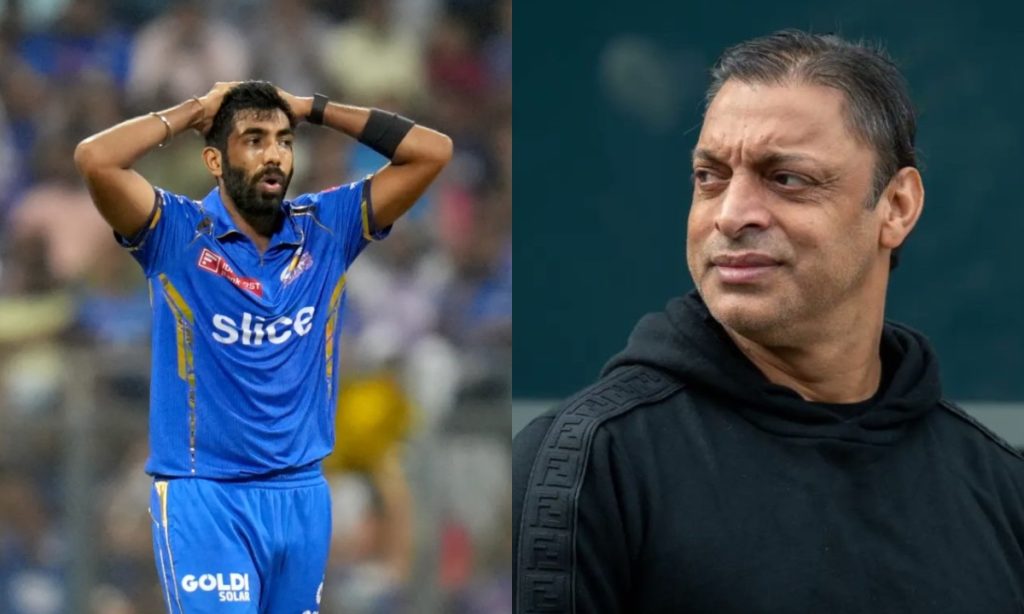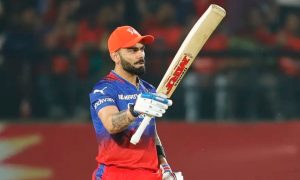In the realm of cricket, where debates over the greatest XI are as common as the crack of the bat, Shoaib Akhtar, the former Pakistani fast bowler, has added fuel to this fire with his choice of an all-time IPL XI and not adding Jasprit Bumrah in it. His selections are a nod to some of the most flamboyant and impactful players in the Indian Premier League’s history, but the absence of Bumrah from this list has raised many an eyebrow.
Shoaib Akhtar’s All-Time IPL XI: Without Jasprit Bumrah
Opening Pair
Chris Gayle opens the batting, a name synonymous with explosive starts and record-breaking sixes. Gayle’s tenure in the Indian Premier League has been nothing short of legendary, setting benchmarks that many strive to reach. Alongside him, Rohit Sharma offers a blend of elegance and aggression, a leader who has turned Mumbai Indians into a powerhouse.
Middle Order
The middle order features Virat Kohli, whose consistency, intensity, and run-scoring ability are unparalleled, even if his IPL numbers don’t match his international records. Next to him, AB de Villiers brings versatility and innovation, capable of turning any game on its head with his 360-degree batting.
Attacking Batsmen
Andre Russell and Kieron Pollard are the all-rounders who have redefined the term ‘impact player’ in T20 cricket. Their ability to smash boundaries and take crucial wickets make them indispensable in any dream team.
Leader and Keeper
MS Dhoni, chosen as captain and wicket-keeper, has not only led Chennai Super Kings to numerous titles but has also been the heart and soul of the IPL with his calm under pressure and those iconic last-over finishes.
Spinner
For spin, Rashid Khan stands as a testament to the evolution of wrist spin in T20 cricket, with his performances often turning matches in favor of his team.
Bowling Attack
The pace attack, however, is where the controversy truly begins. Harbhajan Singh, with his experience and variations, is a nod to the past. Brett Lee brings memories of raw pace and swing, a throwback to the early days of the IPL. And Lasith Malinga, with his unique action and deadly yorkers, completes this formidable trio.
Absence Of Jasprit Bumrah
But let’s talk about Jasprit Bumrah. His exclusion from Akhtar’s XI is not just an oversight; it’s a significant point of contention. Bumrah has been a transformative figure in cricket, especially in the T20 format, with his unconventional action, pinpoint accuracy, and an arsenal of deliveries that have left batsmen bewildered. His performances in the Indian Premier League, particularly in crucial phases of the game, have been match-winning more often than not.
Jasprit Bumrah is arguably the bowler of this generation who has redefined what it means to be a fast bowler in T20 cricket. His ability to bowl effectively at any stage of the innings, from powerplays to the nerve-wracking death overs, sets him apart. His absence from Akhtar’s list is not just about one player but speaks to a larger conversation on how we measure greatness in cricket, especially in an era where fast bowlers are not just about speed but about strategic brilliance.
The selection by Akhtar, while rich in nostalgia and acknowledging players who have left an indelible mark on the IPL, seems to overlook the current dynamics of the game where players like Bumrah are not just participants but architects of cricket’s tactical evolution. This omission raises questions about criteria for such selections – is it purely based on IPL performances, or does international reputation and impact play a role?
Shoaib Akhtar’s Indian Premier League XI is a celebration of cricket’s most electrifying moments and personalities. However, the exclusion of Jasprit from this list serves as a catalyst for debates on how we view cricketing legacies in the T20 format. It’s a reminder of how quickly the game evolves, with new heroes emerging while the legends of yesterday continue to cast long shadows. As the IPL progresses, these discussions will only intensify, underscoring the league’s role in shaping cricket’s narrative and its stars.


